Well, I hear this question pretty often. And if I didn't have 16 years of experience in SEO, I would probably have gone crazy looking for an answer.
Based on my experience, for most niches and websites, it's enough to have 300-500 high-quality backlinks to a site to rank and receive a good amount of organic traffic from Google.
Here’s a general breakdown based on what I’ve seen over the years:
- 🆕 New website – 40 to 100 backlinks
- 📍Local business website – 120 to 180 backlinks
- 🛒 Ecommerce website – 200 to 400 backlinks
- 🔥 High-competition niche website – 500 to 1,500+ backlinks
But not all backlinks help your rankings the same way.
In the article, I will demonstrate this with specific examples.
If you try to search for an answer about the number of necessary backlinks for ranking on forums (below, I took answers from the moz.com forum), you will find conflicting responses:
This user recommends a minimum of 50 links per page.
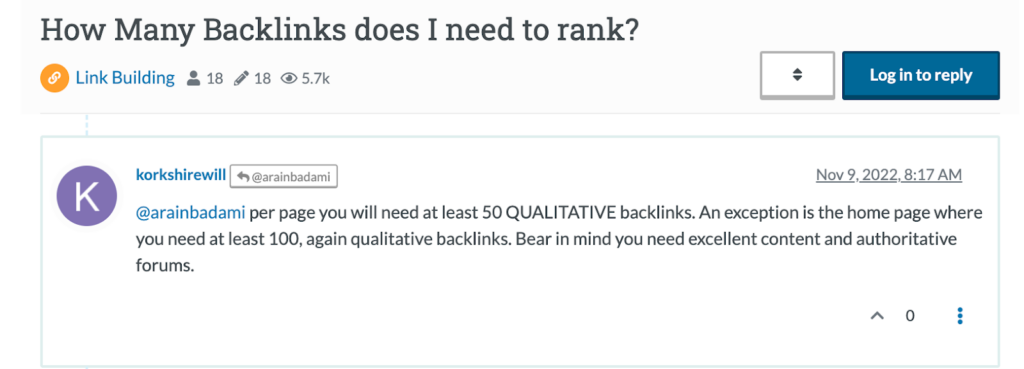
But why 50? And what constitutes a high-quality link?
Or take this response, where someone says that it depends on the quality of the content.

But what is high-quality content? If I create very high-quality content, might I need fewer backlinks?
Here, a user suggests to base it on Keyword Difficulty. If KD is 10, you might need 10 backlinks, but if it's 50, then 100 backlinks might be necessary for ranking.
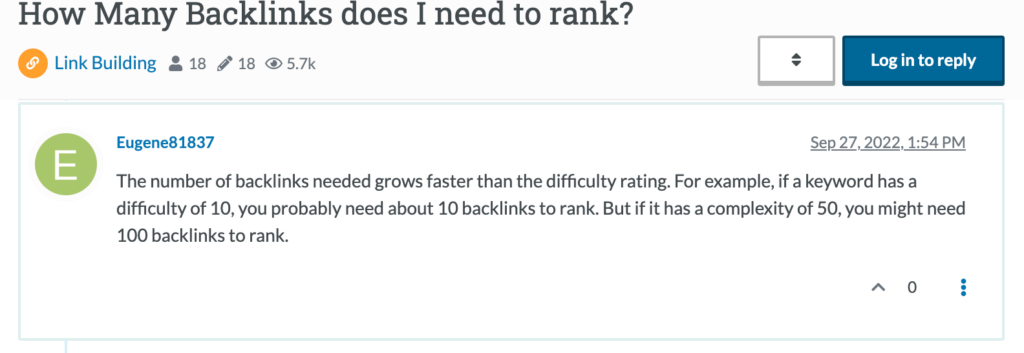
Why do people give such contradictory answers? It’s due to a lack of experience. Also, it’s because they rely too much on SEO tools such as Ahrefs or Semrush.
What do we need to know?
Well, this is the number of backlinks to the domain and the required number of backlinks for the promotion of a specific page.
How Many Backlinks Does My Website Have?
Now, you're probably wondering: “How many backlinks are on my site?” If that’s the case, you can choose from a few cool tools that will help you find out just that.
Take Majestic or Google Search Console for example.
Here’s a quick overview of sites linking to Editorial.Link, showing our total backlinks and top linking domains:
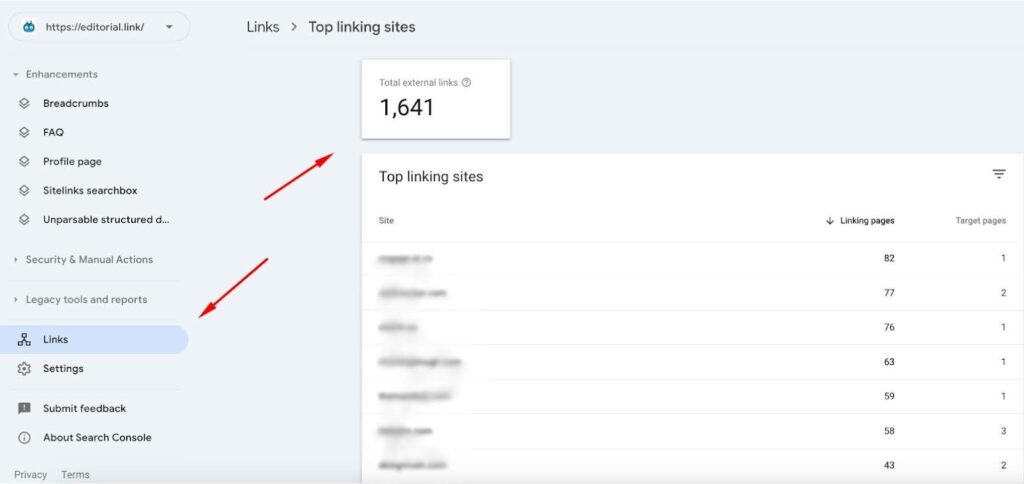
Need more data?
Try Semrush.
Apart from quantity, here you can also check the quality of your backlinks and compare them with your competitors:
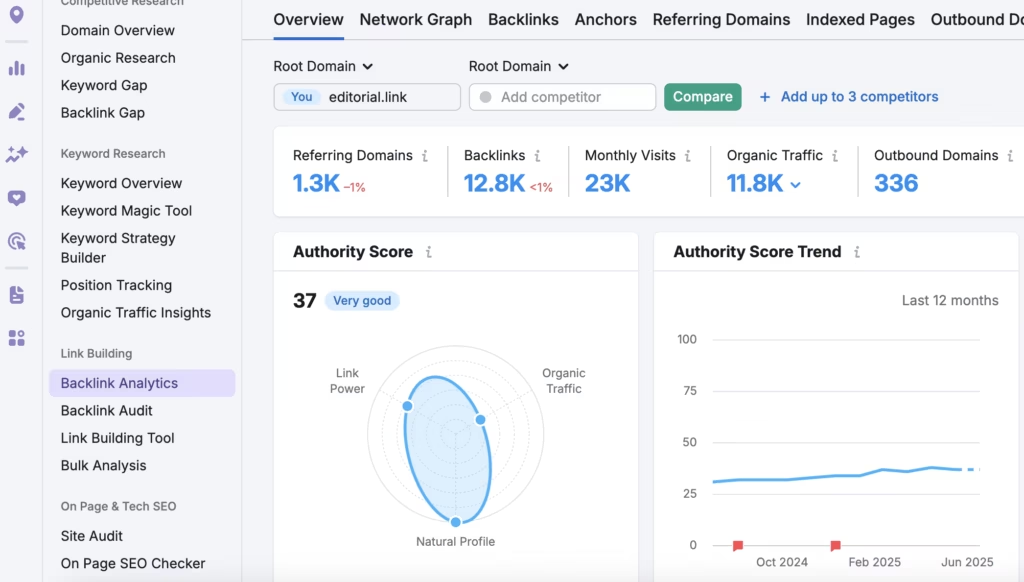
Need more backlink data?
Ahrefs shows new and lost links and referring domains.

Fun fact: according to our data, 68.1% rate Ahrefs as the most accurate and comprehensive source of backlink data, while only 16.2% said the same about Semrush.
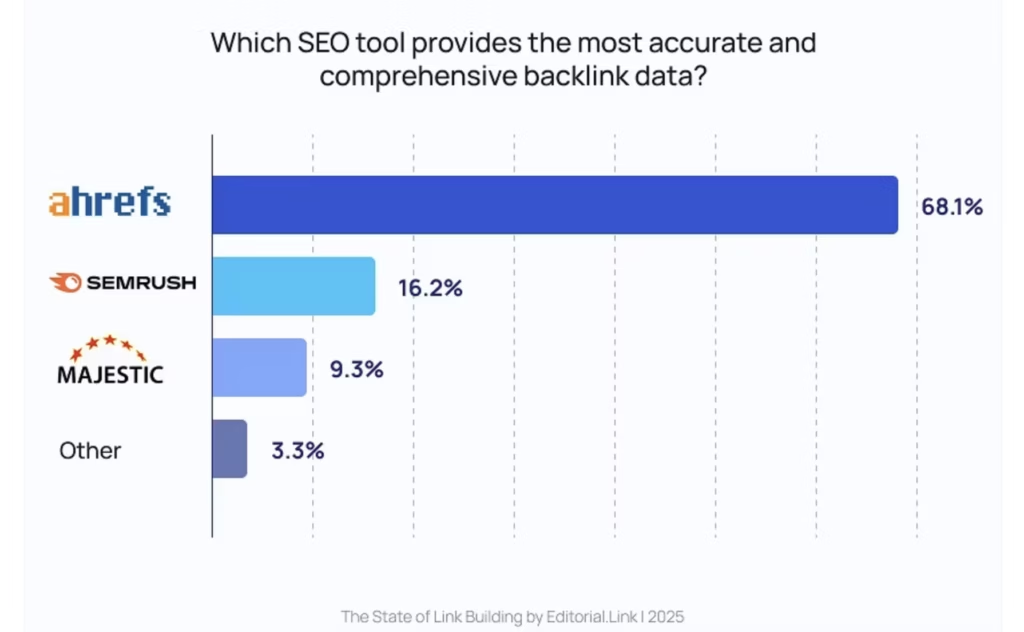
They all show who's linking to you.
Choose what fits and use it to stay on track.
How do I figure out how many backlinks I need to rank?
Let’s use an example from the Editorial.Link site and the search query "ahrefs da checker" to figure out how many backlinks are needed to rank a single page.
If you enter this query into Ahrefs' Keyword Explorer, you’ll find our article needs approximately 202 referring domains to rank in the top 10 on Google.
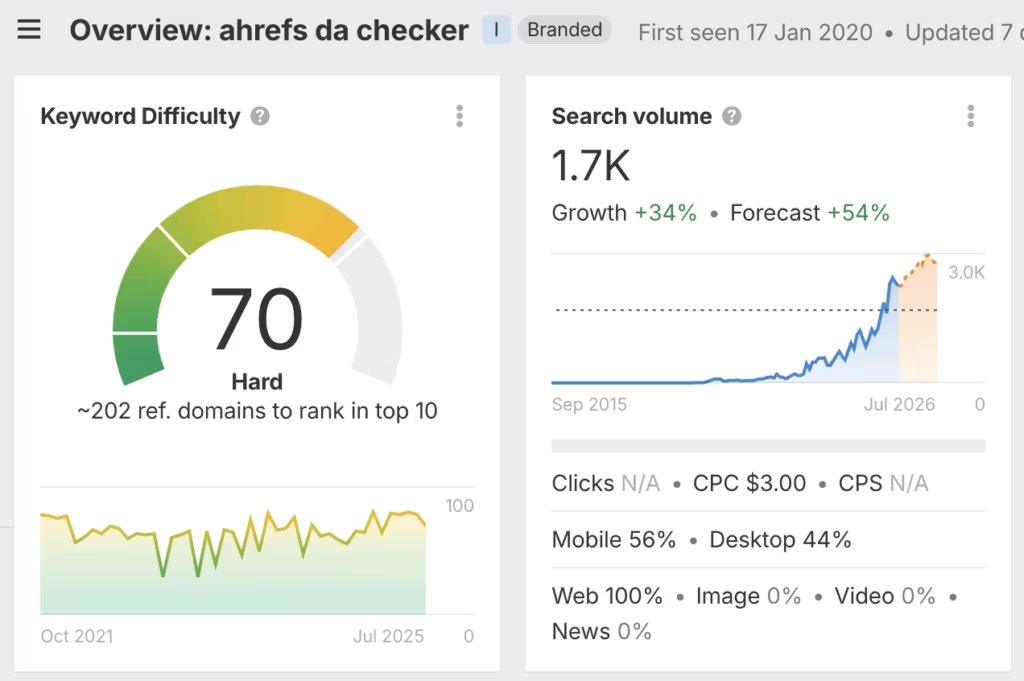
And if I were just starting my journey in SEO, seeing such a high Keyword Difficulty, I might have abandoned the idea of creating a page for this keyword.
But in reality, the Editorial.Link site ranks 5th for the query "ahrefs da checker" with only 17 referring domains.
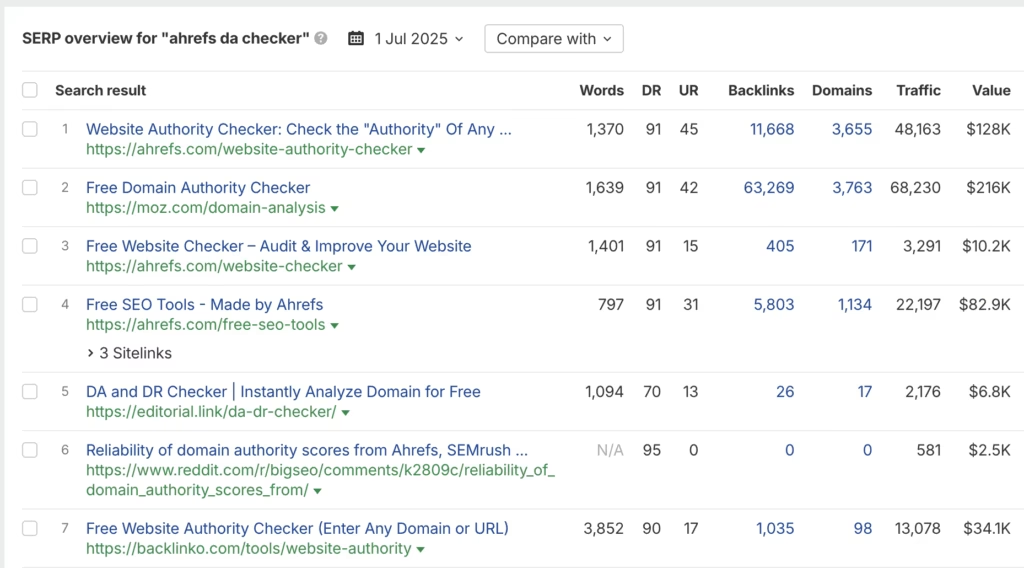
But why does Ahrefs report 202 referring domains?
The thing is, the estimation of the number of referring domains is based on the average number of referring domains among sites ranking in the top 10 for that query.
Pages from Ahrefs, Moz, and Backlinko appear in the top 10, each with over 1,000 referring domains, which heavily skews the results.
Referring Domains Need a Second Look
Before writing the article, I studied the current SERP and noticed that there is a page from searchlogistics.com in the 2nd position with only 6 referring domains.
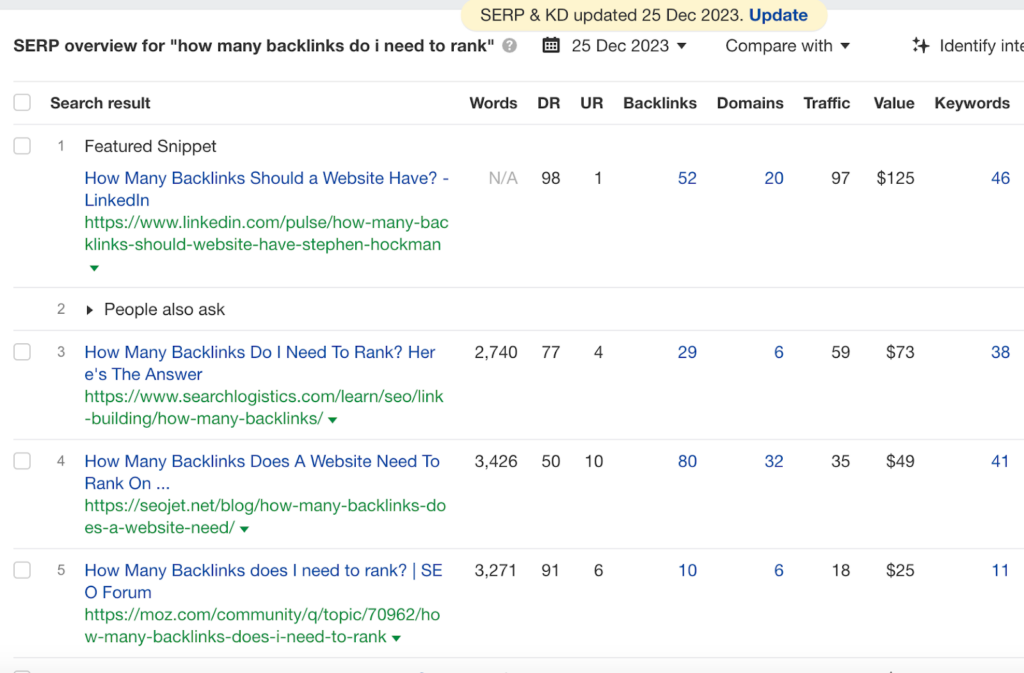
But out of these 6 referring domains, only one can be considered good – juliangoldie.com. The site is thematically relevant, and the link is placed within the content, which looks organic.
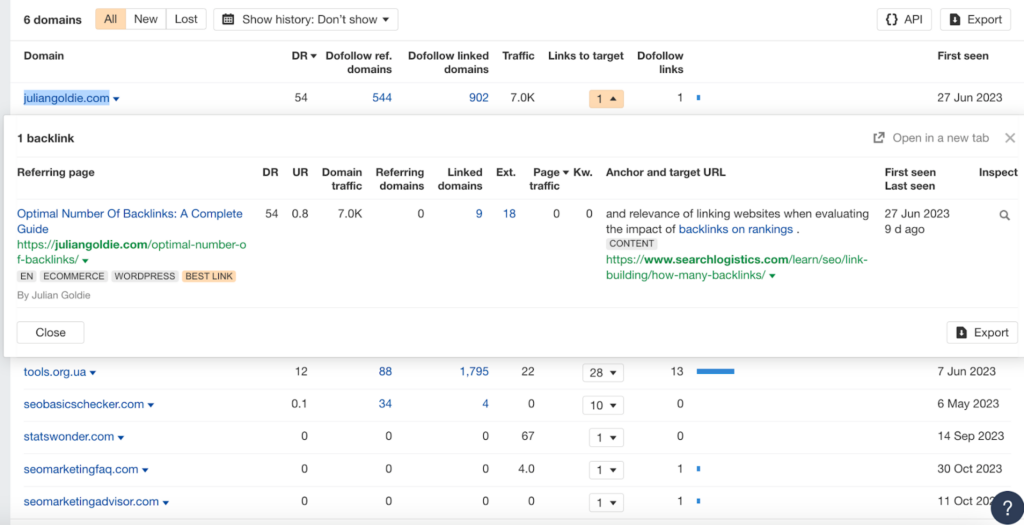
LinkedIn page is at the top position for our query; let’s check its backlinks.
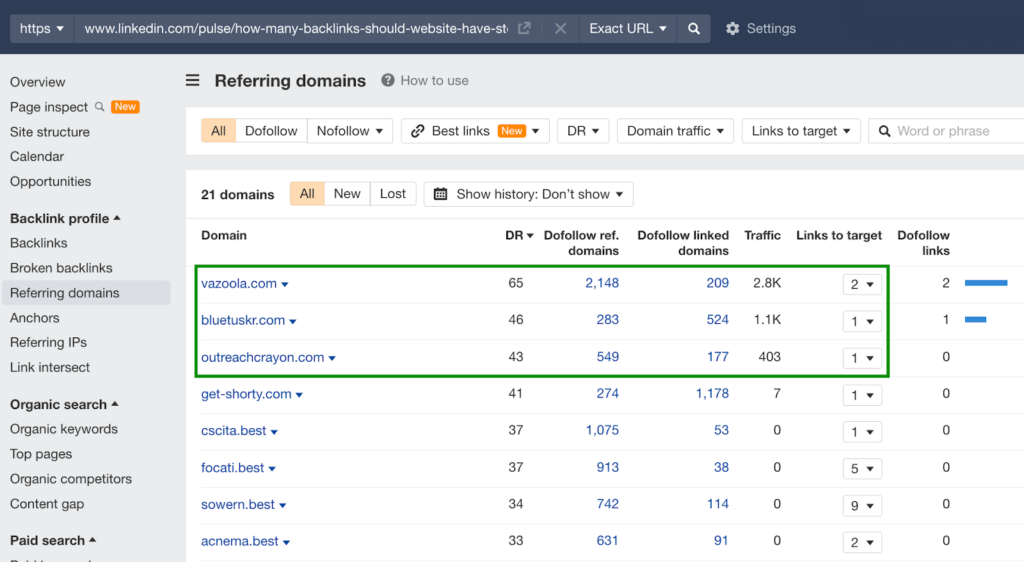
As you can see, only 3 out of 21 referring domains can be considered high-quality. They are not banned in Google and have non-zero traffic.
Thus, we might need anywhere from 1 to 3 links to rank a page for the query "how many backlinks do I need to rank” on a reputable site like this.
What Does Google Say About the Quantity of Links?
John Mueller says that the total number of links doesn't matter. One relevant link can be a strong signal for Google when evaluating a page.

In other words, if you focus on securing high-quality links for your site, you don't need hundreds or thousands of them. 1000 forum links, where anyone can register and drop a link, may not yield the same results as one powerful link from a site like HubSpot.com with a DR of 93.
Here’s an example of such a high-quality link:

Zapier.com, a site with DR 91, is linking to the site Editorial.Link. Moreover, this page has almost 2K organic traffic.
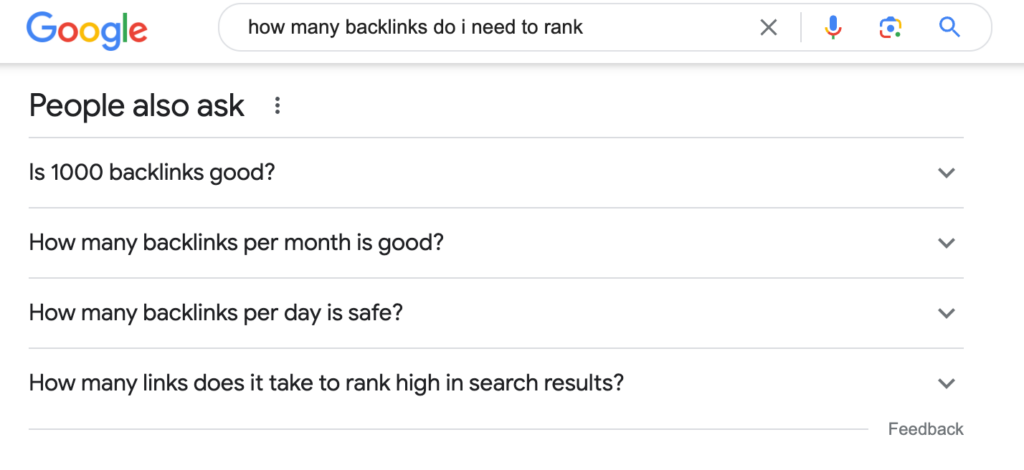
How Many Backlinks Per Day Is Safe
So what is the safe number of backlinks to get in a day?
Well, there are no hard-and-fast rules here, as long as you're focusing on quality links.
The number of backlinks you can safely build really depends on the size and industry of your site. Take big e-commerce sites like wayfair.com, for example—they might build 20, 30, or even 50 backlinks per day, and that’s quite normal for them.
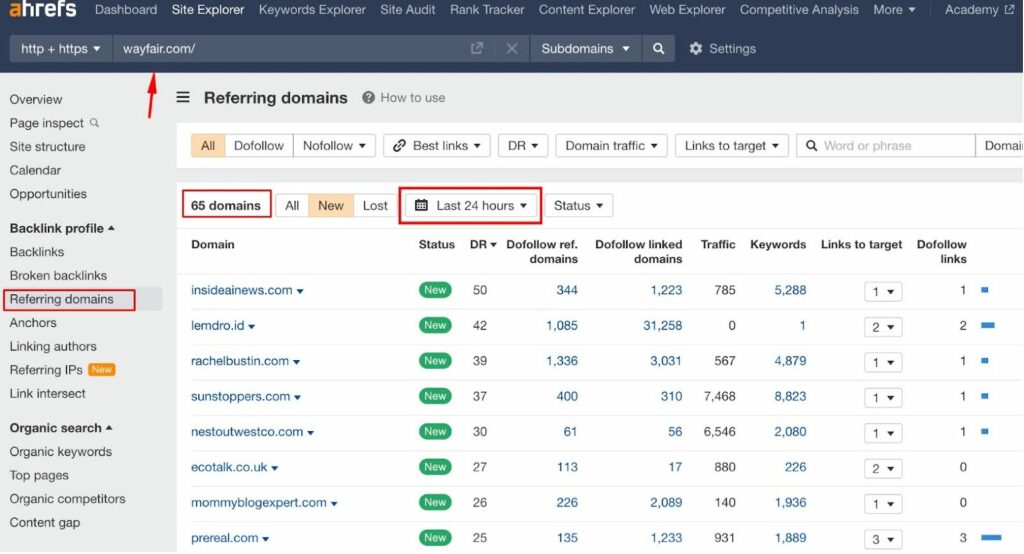
Such sites, with tens of thousands of backlinks already, can totally handle that kind of volume. Just take a look at Wayfair’s referring domains in Ahrefs' Site Explorer from the last 24 hours, and you’ll see how busy they are with link building.
Lastly, apart from racking up numbers, don’t forget about the quality and relevance of those links you're getting. Also, keeping an eye on your competitors will give you a better idea of what’s working in your industry so you don’t go overboard.
How Many Backlinks Is It Safe to Get Per Month?
Just like with the number of links per day, the number of backlinks you can safely build in a month depends on your niche. It is what it is.
Say, if you're in software development, you can take a look at scnsoft.com, a reputable IT consulting and software development services provider with 35+ years of experience. Now, that’s a good benchmark.
Just take a look at their overall backlink profile below, and you’ll notice they have a strong foundation with thousands of referring domains.

But what's more interesting is the steady growth of their link profile over time, which you can see for yourself in the second screenshot from Ahrefs’ Site Explorer.
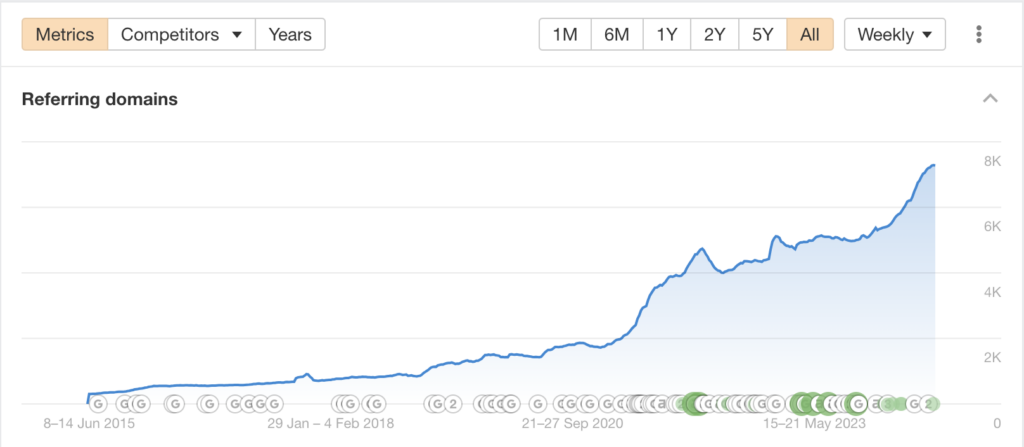
This shows they’re building new links consistently, without huge spikes that could raise red flags with search engines.
Thus, if you want to figure out how many backlinks they add each month, you should head over to the Referring Domains tab and set some filters—Dofollow, DR: 40, and Domain Traffic: 1000.
After hitting "Show Results," we can see the final count (see screenshot below):
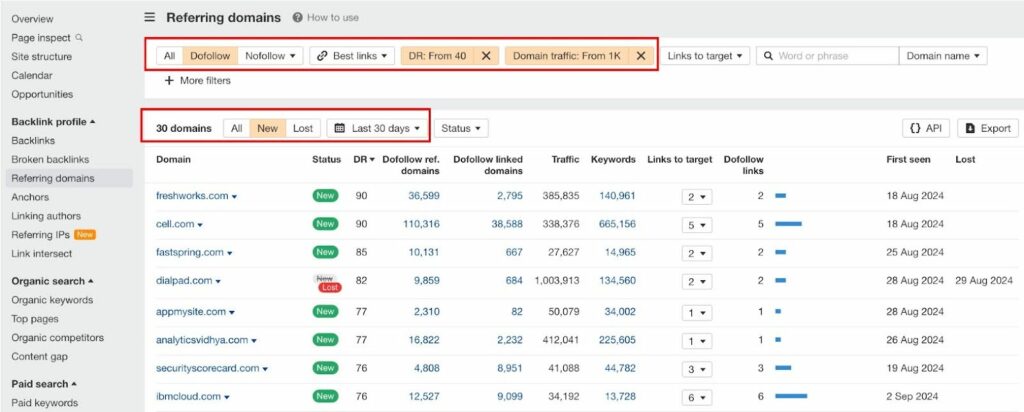
Namely, it’s 30 new referring domains in a month that are high-quality and meaningful for link-building metrics. After all, you don’t need to concentrate on all new domains since some of them might be irrelevant or low-quality trash.
With this approach, you can do the same for your growing competitors and figure out exactly how many backlinks per month to aim for. That way, you can keep up with the competition (without overdoing it) and have a safe number of backlinks to build that makes sense for your industry.
Final Words
There’s no fixed number. It depends on your niche, competition, and link quality.
A few strong backlinks can outrank dozens of weak ones.
Focus on relevance and authority, not just volume.

